Summer 2023
NIDCR News
-
NIDCR’s 75th Anniversary Symposium – June 27, 2023
Join us in kicking off NIDCR's yearlong 75th anniversary celebration with the symposium NIDCR at 75: Celebrating the Past, Charting the Future, on Tuesday, June 27, 2023, from 9 a.m. to 12 p.m. EDT in Lipsett Amphitheater in Building 10 on the NIH campus. Acting NIH Director Lawrence Tabak, D.D.S., Ph.D., former NIH Director Francis Collins, M.D., Ph.D., keynote speaker and University of Michigan Provost Laurie McCauley, D.D.S., PhD., NIDCR leadership, and federal and professional society partners will honor the institute’s scientific achievements and articulate a vision for its future. No registration is required.
-
NIDCR-supported trainees from all career stages are invited to register to attend NIDCR’s 75th Anniversary Trainee Symposium: Celebrating NIDCR Trainees: Past, Present, and Future, taking place virtually Tuesday, October 10, to Wednesday, October 11, 2023. Registered trainees are encouraged to present an oral or poster presentation. Abstracts and posters must be submitted by 11:59 p.m. EDT on Thursday, August 10. This virtual, free event will offer professional development and networking with peers, NIDCR staff, and leadership, and will feature Nobel laureate Ardem Patapoutian, Ph.D., as the keynote speaker. To register, access the
agenda, review the submission guidelines, and more, visit the symposium website.

NIDCR Director Rena D’Souza, D.D.S., Ph.D., recently shared her thoughts on how advances in data science and digital dentistry—from AI to 3D bioprinting—can revolutionize dental care. Separately, she discussed opportunities in dentistry, including integration of dental and medical care and provision of dental care in nontraditional settings, to alleviate the striking differences in access to oral health care among certain groups of people in the U.S.
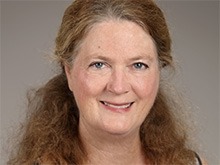
After 42 years of service at NIDCR, Marian Young, Ph.D., retired on May 31, 2023. She was Deputy Scientific Director and Chief of the Molecular Biology of Bones and Teeth Section in the Division of Intramural Research (DIR). Her research focused on the function of extracellular matrix proteins found in skeletal tissues and how they control cellular processes inside and outside of bones. DIR Senior Investigator Indu Ambudkar, Ph.D., M.Sc., will succeed Dr. Young as Deputy Scientific Director.

Dr. Ambudkar has been named NIDCR’s Deputy Scientific Director. She joined NIDCR in 1985 as a tenure-track research fellow. After her tenure, she served as the Chief of Secretory Physiology Section and then as Chief of the Molecular Physiology and Therapeutics Branch. Dr. Ambudkar’s research focuses on the role of calcium signaling in salivary gland function and dysfunction.

NIDCR’s Clinical Director, Janice Lee, M.D., D.D.S., M.S., was named Editor and member of the editorial advisory board of The NIH Catalyst. Dr. Lee will provide an institutional perspective and scientific expertise to the Catalyst, which shares news of NIH intramural research activities across NIH and to the general public. She will suggest article topics, identify emerging issues, and advise on changes in content and format.

NIDCR Deputy Director Jennifer Webster-Cyriaque, D.D.S., Ph.D., hosted a conversation with Jeanne Sinkford, D.D.S., Ph.D. In 1975, Dr. Sinkford was appointed Dean of Howard University’s College of Dentistry, making her the first woman dean of an American dental school. Dr. Sinkford discussed her origin story, experiences as the first woman dean, the impact of mentorship, and her vision for dentistry's future.
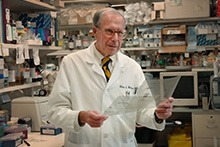
Former National Institute of Dental Research (now NIDCR) scientists Ronald Dubner, D.D.S., Ph.D., Abner Notkins, M.D., and Elliott Schiffman, Ph.D., have passed away. Dr. Dubner furthered our understanding of acute and chronic pain. Dr. Notkins revealed that, in some cases, type 1 diabetes might result from an autoimmune reaction associated with a certain viral infection. Dr. Schiffman identified protein fragments important for bacterial infection defense and pioneered research in cancer immunotherapy. The scientists will be missed for their leadership, collegiality, and mentorship.
Training News
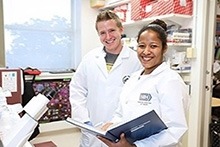
NIH seeks recommendations to improve the peer review process for Ruth L. Kirschstein National Research Service Award (NRSA) fellowship applications. Responses are due by Friday, June 23, 2023. The proposed changes in review criteria and application forms will help reviewers better evaluate candidates without undue sponsor or institution influence and target candidates’ specific training needs. The goal is to identify promising trainees and training programs that will help trainees excel as scientists.

Are you interested in learning about NIDCR-supported research training and career development opportunities? Register to attend NIDCR’s informational webinar on Thursday, July 6, 2023. NIDCR staff will share details and answer questions about funding opportunities that support research training across a range of career stages, from high school students to early career investigators. A recording will be available.
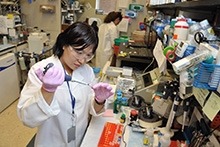
The Postdoctoral Research Associate Training Program is seeking applicants for a competitive three-year fellowship that provides research training in the basic biomedical sciences in NIH intramural research laboratories, including NIDCR. The application deadline is Tuesday, October 3, 2023. The program, led by the National Institute of General Medical Sciences (NIGMS), prepares trainees for leadership positions in biomedical careers through mentored laboratory research, networking, and intensive career and leadership development activities.
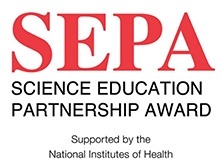
NIDCR is soliciting applications, due Friday, July 14, 2023, for the NIGMS Science Education Partnership Award, which supports educational activities that encourage prekindergarten to grade 12 students from diverse backgrounds to pursue science, technology, engineering, and mathematics. NIDCR will support educational activities that advance basic, translational, and clinical knowledge in dental, oral, and craniofacial health. Applications that propose partnerships with dental schools are encouraged.
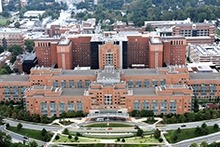
Calling early career clinician-scientists—apply to the NIH Lasker Clinical Research Scholars program by Friday, August 25, 2023. The program supports exceptional clinical researchers in the early stages of their careers to promote their advancement to fully independent positions. Selected scholars will receive five to seven years of support as independent investigators in the NIH Intramural Research Program, followed by the opportunity for additional years of financial support.

The 2023 NIH Diversity Supplement Professional Development and Networking Workshop will take place Tuesday, August 29, to Wednesday, August 30, 2023, bringing together scholars from over 20 NIH institutes, including NIDCR. The virtual event will allow scholars to meet NIH program staff and demystify the NIH grant and review process. Attendees will be able to present their research at poster sessions, network, and learn about past scholars' career paths.

Your program officer is an important resource when managing your NIH application or grant. They can help you determine if your proposed research topic fits their program or would be better suited for a different program. They can clarify the status of your application. You can also contact them to ask questions about NIH policies and discuss any issues that may affect your research progress and aims. Don't hesitate to contact your program officer to seek advice.
Science Advances
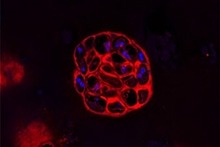
Disrupting a sugar-laden protein called biglycan impaired bone growth and fracture healing in mice, according to a recent NIDCR-led study. The findings point to biglycan's importance for building strong and healthy bones and could provide insight into better treatments for fractures and diseases marked by bone loss, such as osteoporosis.
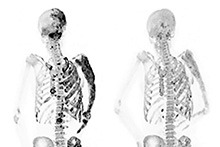
An NIDCR-led clinical trial at the NIH Clinical Center found that a medication, denosumab, showed potential for treating adults with fibrous dysplasia, a rare disease marked by weak and misshapen bones. The medicine is the first to reduce the bone-weakening process in fibrous dysplasia and may one day improve patients’ quality of life by returning affected bones to a healthier state.

In a SciBites video from the NIH Intramural Research Program, Sreya Sanyal, a postbaccalaureate research fellow in the lab of NIDCR’s Thomas Bugge, Ph.D., shared her research on developing potential cancer treatments using anthrax toxin. Anthrax toxin is a molecule made by a bacterium. Sanyal aims to modify anthrax toxin to recognize and kill cancer cells without damaging healthy cells.

In an NIDCR-supported study, researchers are developing "smart" masks that can detect SARS-CoV-2, the virus that causes COVID-19, in breath and saliva. The masks contain a small sensor that can detect viral particles in the wearer's breath and change color in their presence. In addition to SARS-CoV-2, the technology could one day be used to detect other types of diseases, such as fungal infections.
Grantee News
Do Spiny Mice Hold the Key to Regenerative Healing? UK Study Explores
Healing the Unhealable: New Approach Helps Bones Mend Themselves
You've Got Some Nerve
Why Do Some Parents Reject Fluoride for Their Kids? Study Has Answer
Researchers Find Key to Healing Muscle Injuries in Elderly
How to Assemble a Complete Jaw
NIH/HHS News

NIH launched a new prize competition to recognize effective strategies by academic institutions to promote diversity, equity, inclusion, and accessibility (DEIA) in research environments. The NIH Institutional Excellence in DEIA in Biomedical and Behavioral Research Prize Competition will award up to 10 prizes of $100,000 each. To participate, register by Tuesday, September 12, 2023. Entries will be accepted through Tuesday, September 26, 2023, 5 p.m. EDT.

Funding opportunity announcements, or FOAs, which advertise available research grant support, have undergone a name change. The announcements formerly known as FOAs are now called “notices of funding opportunities,” or “NOFOs.” NIH is joining other federal agencies in using the term “NOFO” in an effort to standardize terminology across the government. Both terms will be in use while NIH works to update websites and resources.

On April 3, HHS released a National Cancer Plan, developed by the National Cancer Institute (NCI), which will provide a framework for how individuals, communities, and researchers can work together to end cancer as we know it. The plan aims to realize the vision laid out by President Joe Biden and First Lady Jill Biden's Cancer Moonshot. The ultimate goal is to reduce the cancer death rate by at least half over the next 25 years. A recent NCI study found that cancer death rates must decline at faster rates to achieve this goal, and its authors outlined opportunities to better prevent, detect, and treat cancer.
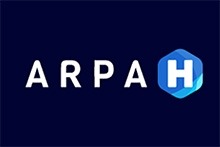
The Advanced Research Projects Agency for Health (ARPA-H) launched its first program to solve treatment challenges in osteoarthritis, a common and often painful condition where bones and cartilage break down. The program, called Novel Innovations for Tissue Regeneration in Osteoarthritis (NITRO), is soliciting proposals, due June 23, 2023, that leverage regenerative medicine to create minimally invasive therapeutics that fully regenerate damaged joints.

NIH researchers have developed and released an innovative software tool to assemble truly complete, gapless genome sequences from a variety of species. This software, called Verkko, which means “network” in Finnish, makes the process of assembling complete genome sequences more affordable and accessible, and it will allow scientists to better assess human genomic diversity.


